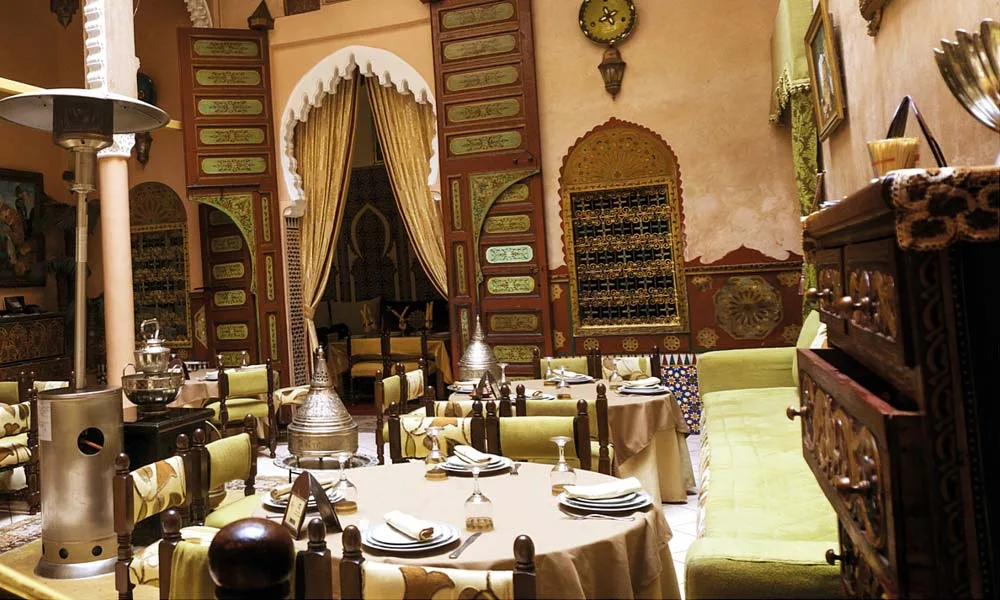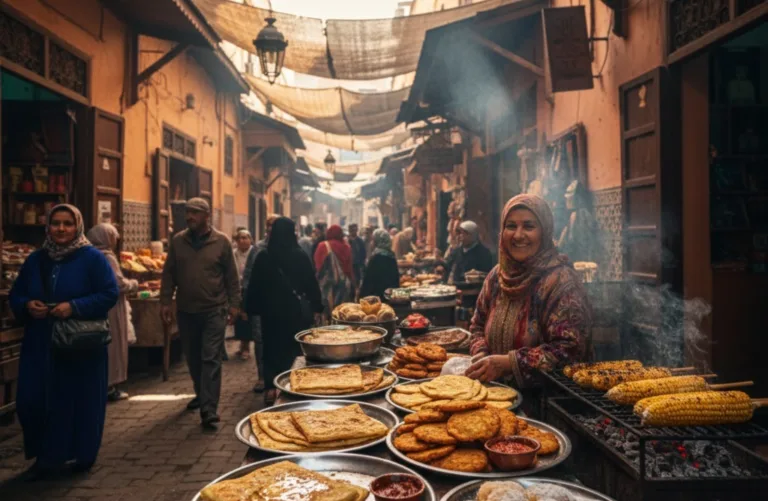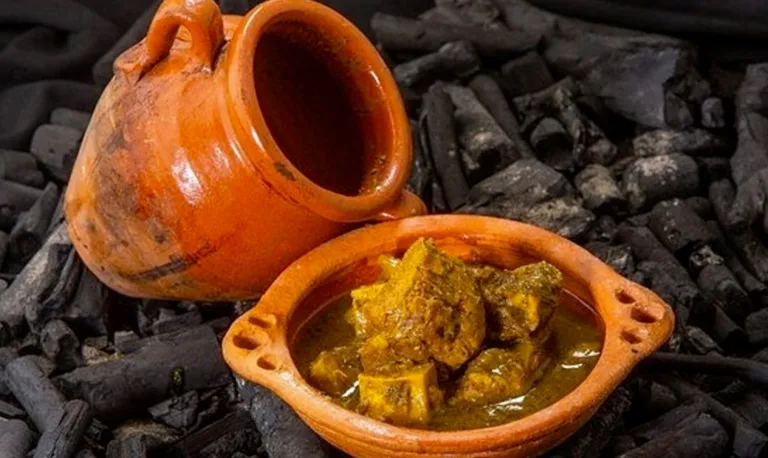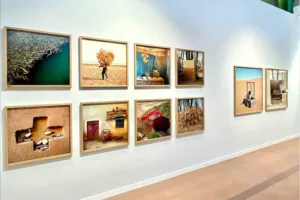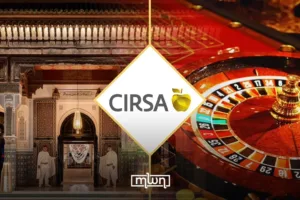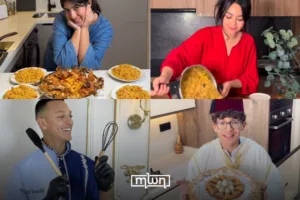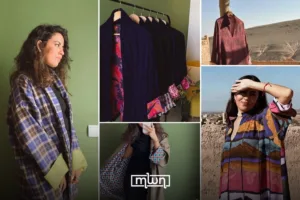Rabat – Tucked inside the Sidi Fateh quarter of Rabat’s medina, Dar Rbatia is one of those addresses that locals recommend almost instinctively when asked where to taste “real” Moroccan food in the capital. Opened in 1989 in an 18th-century house, the restaurant was restored using traditional techniques by local artisans, transforming a historic family dwelling into a riad-style dining space with carved wood, zellij, and painted ceilings.
The building’s layout follows classic medina architecture: an inner courtyard on two levels, surrounded by salons where guests sit under chandeliers and cedar beams. Decorative details – from hand-cut tiles to wrought-iron balconies – are meant to evoke an old Rabat family home rather than a conventional restaurant. Many visitors describe Dar Rbatia as much a cultural stop as a place to eat, especially when live music is added to the mix.
On the table, Dar Rbatia specializes in what it calls “traditional Moroccan gastronomy,” offering a full tour of classic dishes: tomato and zaalouk salads, slow-cooked tajines, couscous topped with vegetables or mechoui, and delicate chicken or seafood pastilla. Menus are organized in the familiar entrée–main–dessert structure, but portions and recipes follow home-style standards rather than minimalist fine dining.
Traditional Rabat staples
The restaurant also highlights Rabat-specific specialties that are less common elsewhere, such as kefta hrech (often called kefta rbatia), a tajine of beef and rice meatballs scented with saffron, cinnamon, and turmeric, and bastila rbatia, a sweet pastilla filled with almonds, orange blossom, and sugar rather than poultry. For dessert, chebbakia rbatie – the Rabat version of honey-drenched fritters – often appears alongside fresh fruit and traditional pastries.
Dar Rbatia’s owners present the restaurant as both a dining room and a kind of informal museum of Rabati taste. Over the years, it has become a regular stop for tour groups, visiting delegations, and Moroccan families marking special occasions.
Its location adds intrigue: the restaurant sits in what was historically one of Rabat’s more affluent medina quarters. Guides and city rankings frequently list it among the capital’s reference addresses for traditional cuisine.
Service leans into the classic ritual of Moroccan hospitality: mint tea poured from high above the glass, brass trays, and staff in traditional dress. In the evenings, live Andalusian or chaâbi music sometimes turns the central patio into a small concert space, emulating the feel of a private home during a celebration rather than a strictly formal restaurant.
Nearly four decades after it first opened its doors, Dar Rbatia continues to play a quiet but important role in Rabat’s cultural life. In a medina increasingly dotted with new cafés and concept eateries, it stands as a reminder that old family recipes, historic houses, and slow, shared meals remain at the heart of the city’s identity – and still have a place on the itinerary of anyone keen to understand Morocco through its food.

